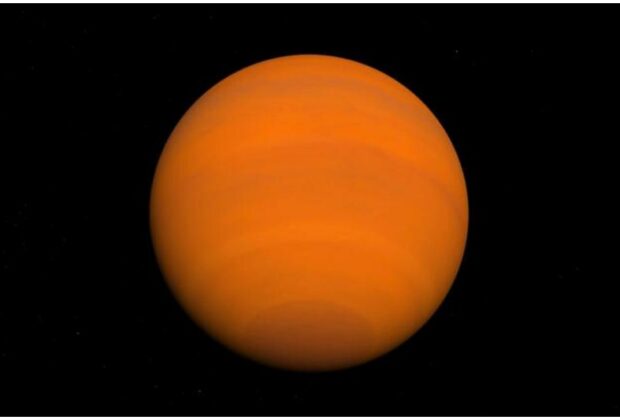Scientists announced on Monday that they have found a massive planet 1,200 light years from Earth with a density similar to cotton candy.
WASP-193b is an exoplanet, meaning it is not in our solar system, according to research that was just published in the journal Nature Astronomy on Tuesday. It is 50% bigger than Jupiter, the largest planet in our solar system, but due to its incredibly low density, it is seven times less massive.
Julien de Wit, an MIT professor and co-author of the study, stated in a news release that “it’s difficult to think of an analogous, solid-state material” because of how light the planet is. “The reason why it’s close to cotton candy is because both are pretty much air. The planet is basically super fluffy.”
WASP-193b is unique among the more than 5,000 exoplanets that astronomers have found so far because of its incredibly low density, according to the researchers. So far, scientists have only discovered Kepler-51d, a Neptune-like planet that was discovered ten years ago, as the only planet that is less dense than WASP-193b.
The majority of WASP-193b’s composition is thought to be hydrogen and helium. It circles a Sun-like star every 6.25 days, according to research. It is unknown how a planet is able to inflate to such an extent, they added, adding that the gasses most likely form a massively inflated atmosphere.
“We don’t know where to put this planet in all the formation theories we have right now, because it’s an outlier of all of them,” Instituto de Astrofisica de Andalucia astronomer Francisco Pozuelos, the study’s author, stated in a statement. “We cannot explain how this planet was formed.”
According to lead study author Khalid Barkaoui, the planet is a “cosmic mystery.” By utilizing the James Webb Space Telescope to measure atmospheric parameters, Barkaoui seeks to unravel that riddle.
“Super-Puffs” is the word used by scientists to describe the special class of exoplanets that have densities similar to cotton candy. According to NASA, there is nothing like in our solar system.
In 2019, scientists reported the finding of another puffy exoplanet, WASP-107b. WASP-107b has a mass of only one hundredth that of Jupiter, yet it is roughly the same size.








